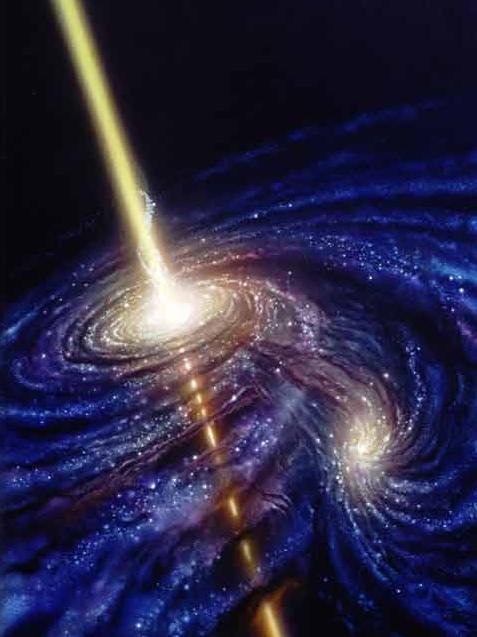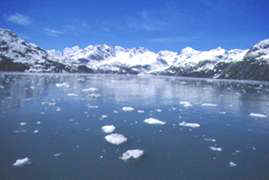




In the video titled "20/20 last days on earth" it shows the top seven ways how our Earth could possibly inevitably die. You see... it all started with a Big Bang. We Humans are just one of the billions of lifeforms that were lucky enough to be on this Earth. Most of the species that have existed all died-because they could not foresee their demise coming. We can now. For years, many religions have preached of an "Apocalypse" We now, have a belief of what that could be.
7. We all fear something of massive proportion-the death of a star or Gamma Ray Bursts - creates gamma radiation. These are the biggest explosions since the Big Bang itself. A Gamma Ray Burst is the final stage of the death of a star. Most are at safe distances-but suppose one happened nearby-in our own galaxy. If a gamma ray bursts it will big the brightest thing in the sky-brighter then the Sun. Even at 8,000 light years away a burst in our direction would be catastrophic. When it hits it would annihilate our Ozone layer. Temperatures would severely increase. People would be severely burned. Eventually on a molecular level-the cells would stop reproducing. The end of all life as we know it. We would all just disappear within almost one month. All that would be left would be our ruins.
The Universe is a very bad place-black holes are worse. They are invisible and travel thousands of miles per hour devouring all in their wake. They are all over the Universe. Anything and everything is pulled within. Send a nuclear weapon into a black hole and nothing happens. A black hole has a enormous gravitational pull. Like gamma bursts they are results of deaths of stars. Stars in essence are neither shrinking nor expanding ,but in balance. Gravity wants to make them smaller ,but heat keeps it normal. When a star begins to cool, it can't sustain itself against the gravity. The gravity wins, and collapses the star. When the star shrinks to a single atom it creates a massive gravitational pull. It is so strong - no matter your speed you can try to get out ,but be pulled back in. Even light can't escape the massive pull. Originally we believed black holes were stationary, eventually we found out they move. If a black hole were to come upon Earth - we'd stand no chance. We'd be able to know when and how we'd die. As the black hole closes in on our planet you'd see the effects first hand at the tides. Water would wash over the continents annihilating most of us. The remaining survivors would begin to stretch and stretch. Slowly you'd be sucked away into a singularity.
6. Computers becoming self aware. It is fairly likely that computers could possibly within the next 100 years take over. Most people think machines could not become intelligent. However, machines could possibly wipe us out with their own artificial intelligence that we are giving them. We are slowly creating our own death. We have computers now that fit in our pockets, back then computers were tons. The more advanced our technology becomes the bigger the chance becomes. We are literally giving up our intelligence - giving machines the job. Think of military machines that are used for combat that think on their own. We risk these machines taking control. Virtually these machines already control many of our natural resources. It would not take long for them to remove us from existence.
5. Beneath Yellowstone park comes a threat from within-molten rock seeking to get out. If a super volcano were to burst, we would not stand a chance. Alone they are damaging enough-with more it's enough to annihilate us. Super volcanoes are mountainous - eventually they will erupt. We can't tell where or when. Once they erupt it will only be a matter of time. How can we prepare for something we can't expect. We've never had one. All we can rely on is indications - which could be inaccurate. The explosion would kill everything in it's radius. It also would send severely poisonous toxic gas as well. The sulfuric gas would make temperatures plummet. We'd be plunged into an ice age lasting for many generations. It would be a new world.
4. Asteroids are a big problem. An asteroid is believed to be the cause of extinction of the dinosaurs. The average asteroid travels faster then a bullet. When they hit they cause severe damage. Look at the Moon for instance. Asteroids can render us extinct. Are asteroids our friends or enemies? They made us who we are through evolution. But, just as easily they can remove us. In 2004, they discovered where a new asteroid will go - it heads so close to Earth it can dip below our communication satellites and orbit around Earth on April 13, 2029. Depending on it's first passing, will determine it's next area. It potentially could hit our Earth on April 13, 2039. We don't want to blow it up - because it could make it send out thousands more When it hits, it begins to dig a crater. Then, it takes time to form the crater. The area is splashed out. Massive earthquakes and tidal movements would occur. Within as little as an hour the whole planet feels it's effect. The continental crust begins being sent up into the atmosphere. Then it would send out thousands of shooting stars sending out a fire storm of debris. NASA believes we can use gravitational pull from satellites to move the asteroid - saving us.
3. We are our worst own enemy. We fear nuclear war of which could potentially destroy us all. A nuclear explosion changed man's place in the Universe. We understood the power we unleashed. We could kill not only others - but all Human beings. We could duplicate the power of a star. Could we control what we created or who controls it? The Russians and the United States have 80,000 stationary bombs equal to Hiroshima atomic bombs.It only takes 20 nuclear weapons to cause a chain reaction throughout the world. Most likely the only reason for this would be accidental - if we see a missile, we fire back - then they fire back. With enough explosions we'd be put into a nuclear winter. This possibility depends on ourselves. We must refrain from temptation of using of these weapons or destroy everything.
2. Mostly unknown to us exist species we've never known - microbes. Many are harmless, but some are potentially harmful. We have the technology to make them more bio hazardous. It only takes one madman to create a pandemic. Any pandemic flue could potentially kill millions perhaps billions within a short period of time. We have the power to create deadly diseases-biological weapons. We also can receive diseases from nature. We are over due to a pandemic disease for they occur as often as natural disasters. We are more of a threat to ourselves then nature. It is cheaper and easier to advance in biological technology. It is bad enough some people have the button - it would get worse if everyone had that button. Someone would press it. It would not take long to infect people. Just a sneeze alone and it's spread. Selecting a place would be easy - any place with lots of people like subways or airports.
1. Climate shift is the most dangerous threat to our lives. Things have been changing. The Sea has risen. It has become hotter. Animals seem to move from their natural location. There is heavier rainfall. This planet is changing rapidly before our eyes. We've seen an increase in natural disasters. Glaciers are melting double the speed. Everything has begun to change. Climate change is real, it's happening, and we are the reason for it. The probably of this is extremely high. A major belief that is causing this is carbon dioxide. The most common of the green house gases. This absorbs the UV rays- no atmosphere no rays then we freeze. On the other hand we could get the opposite turning us into a planet like Venus. When the carbon dioxide amount increases - the temperature increases. We send out 70 million tons of Carbon dioxide into our atmosphere every day. Every year heat has continued to dangerously increase. Soon enough we won't be able to go outside. Soon it will be so bad everything will begin to melt due to severe heat. Greenland and the west Antarctic Ice sheets are melting at unstably fast rates. If we don't act now, it will get worse. Within time the Sea level will massively rise 20 ft for both Ice sheets - that's 40 feet of Sea level rise. Between now and 2100 could possibly be an empty world, because most civilizations would be wiped out by being underwater due to the sea level rise. Nothing would be done, because Sea walls being built would cost too much. People would be evacuated on a mass scale. Millions would be forced to move from the coast inland. Land would become bad, and we would not be able to grow crops. We'd have little fresh water. Wars would break out over this. The world would go into chaos. The future is in our hands - it is up for us. We control our future.
With promise,
Aaron






















